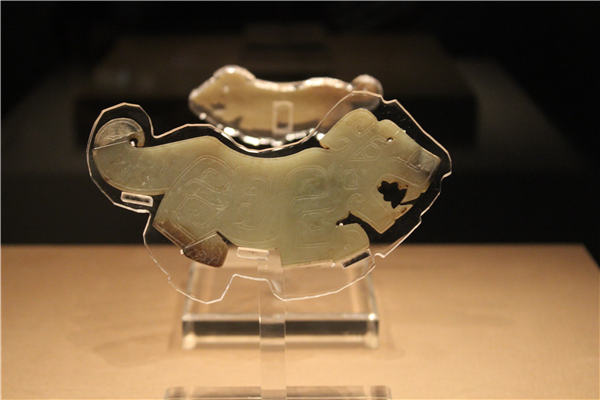
Nevertheless, Fu Hao is not a common queen who hid behind a veil. As one of the wives of Wu Ding, a king of the Shang Dynasty whose reign lasted for 58 years, she is known as a female general assisting her husband.
According to Feng Hao, a history researcher at the Capital Museum and curator of the exhibition, she led at least four major wars against surrounding tribes. She even mobilized as many as 13,000 soldiers for a military expedition, an extraordinary achievement in her time.
"This reflects her charisma and power," says Feng. "Though we also found tombs of Wu Ding's other wives, Fu Hao's tomb is closest to the palace relics, which reveal her status in the king's heart."
A replica of the tomb has been created in the exhibition hall, and virtual-reality glasses provide an opportunity for visitors to see facades of the Shang palaces, which are created by archaeologists based on their studies.
"Intermittent wars were a common thing during the Shang Dynasty. So you cannot blame Fu Hao for her brutality, because that was the way it was in that time," he adds.
A bronze yue axe is among the exhibits, which shows her status as a top military commander.
However, a delicate monster-shaped bone hairpin shows a gentler side of this battlefield heroine. Exhibits like a jade dragon and jade parrots with connected tails also remind people of her pursuit of aesthetics.
Several jade figurines on display show the general appearance of the Shang people.
A bronze owl-shaped zun wine vessel with complex ornamentation not only epitomizes flamboyance, but reminds people of animated animals today.
Some unearthed articles are from earlier periods of history-like the late Neolithic Period-which Feng says reflect her wealth and fine taste.
Finds from recent years are also included into the exhibition.


















































